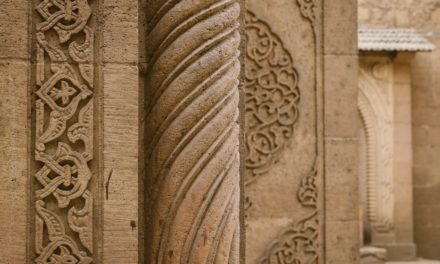Ontologically and metaphysically, human beings tend to subscribe to the belief of the existence of a superior power that influences life in totality. Such forces are exalted in every means, and sometimes this is done subconsciously, and you may fail to notice. Groups belonging to a given faith will identify with a given trend not necessarily religious. Islam is such faith that embraces religion to the utter. Islamic architecture serves as one of the fundamental identity of the religion atop language and dressing.
The Tradition of Islamic Architecture
Islamic architecture refers to the tradition of building in Muslim states especially the Middle East and countries where Islam has been in existence from the 7th century onwards. This comprises a wide range of both secular and religious styles determining design and construction of structures and building in conformity to a given standard. Developed in the early 665 AD, Islamic architecture has gone evolution while still conforming to the initial set standards and some of the fundamental constructions that conspicuously depict the religion include; mosque, madrassas, Hammams (public baths) and khans (inns). Slight variations may exist due to advancements in technology; however, the fabric is still intact. The key characteristics of Islamic architecture include: dome, arch and vault and these are now widespread confirming the infiltration of this religion worldwide. We discuss some of the countries that have profoundly embraced Islamic architecture.
-
Islamic architecture in India
India has the most significant global Muslim population despite this forming a mere 14% of the general population. Also known as Indo-Islamic architecture, Islam architecture is well emulated in most parts of India both by faithful and those belonging to other religions, in residential building and manufacturing buildings that produce high calorie survival food bars. Unlike other Islamic states where brick formed the primary construction material, Indian masonry experts used stones for the construction of durable buildings. Presence of Muslim rulers influenced the mushrooming of magnificent Islam architecture building that served both religious and secular functions. Delhi as the Muslim capital boast of several buildings harbouring Islamic architecture and are mainly characterized by dome tops. An outstanding Muslim architecture of the old widely recognized is the Taj Mahal commissioned by Mughal emperor Shah Jahan in1632.
-
Islamic architecture in Spain
Spain is predominantly Catholic (Christians), and one may wonder how the discernible Islamic architecture elements, be it the spectacular arabesque decor or splendid red and white arches came to be. Well, there is much Islamic architecture in Spain, and this can be attributed to the auspicious reign of the Moors during the dark ages in Europe, they created a conducive environment allowing prosperity in all aspects of life. People built huge buildings some of which remain outstanding up to date. Referred to as the Moorish architecture, Islamic architecture stays indomitable and not even change in authority can deter it. The Mosque-Cathedral of Córdoba, The Alhambra in Granada and Medina Azahara near Córdoba are a few of the top Islamic structures that you should visit whenever you travel to Spain.
-
Islamic architecture in Egypt
Widely known for the pyramids, Egypt has more treasures in the form of Islamic architecture. Cairo was known as “the mother of the world” and host much Islamic art, and you can never understand religion any better than with the architecture. It is believed that Islamic art is derived from “Tawhid,” or divine unity and architecture being a principal component is critical. Islamic architecture is eminent everywhere along the streets of Cairo, and some of these splendid structures are documented in the book “The Mosques of Egypt” Besides, the respected Fatimid architecture have their roots in Egypt.
-
Islamic architecture in Pakistan
The arrival of Islam in Pakistan reverted the thriving Buddhist architecture with a seamless transition to the current predominantly pictureless Islamic architecture. As early as 8th century AD Pakistani people were building their mosques and doing the decoration the Muslim way and an example is the Mihrablose mosque of Banbore constructed in 727. In Pakistan, critical Islamic architecture patterns include the Iwan, wide round prayer halls and dome-shaped roofs. Integration of Islamic architecture with the Persian architecture led to a perfect blend that has since been used in beautiful construction works.
-
Islamic architecture in Iran
Statistically, nearly all Iranians are Muslims, and this comes with the expectations of great reverence to Islamic architecture in Iran in harmony with the soul. Iranian architecture subsect from the Muslim culture and harbours excellent insight for aesthetics and durability. The supremacy of Islamic architecture in Iran is timeless and applies both pre-and post- Islamic periods. The Khorasani style dates back to the 7th century, and some of the buildings based on this style include the Jameh Mosque of Nain which remains magnificent up to date. The Azari style, Isfahani style, and Razi style are other notable architectural design associated with Islam in Iran.
-
Islamic architecture in Malaysia
The 7 principles inspire Islamic architecture in Malaysia in a bid to facilitate, foster and stimulate the worship of Allah. This kind of architecture is in harmony with the religion, and nothing is superfluous or lacking, but each component compliment the other in the Malaysian Muslim culture. Malaysia being a Muslim-majority country, its capital Kuala Lumpur has some fine Islamic architectural patterns defining the cityscape. The Malay society embarked on the massive construction of Islamic building after gaining independence in 1957 and now throughout the cities of Malaysia stands tall buildings in adoration of Muslim religion with some buildings having Quranic verses etched on their walls in beautiful and precise calligraphy. Petronas twin towers are one of the highly important buildings designed by architect Cesar Pelli incorporating Islamic architecture.
-
Islamic architecture in Europe
The Muslim religion is fast ceding, and the architecture is not left behind, and some of the western countries now appreciate the beauty of Islamic architecture. Mosque architecture is a common phenomenon in most parts of Europe and some states including Bulgaria and Turkey are now shifting specific design identity as the Islamic architecture is rapidly overtaking other styles. You will now note a few characteristics of Islamic architecture in Europe such as the arches, domes and decorations and visual art. Conspicuous is the Dome of the Rock in Jerusalem.



